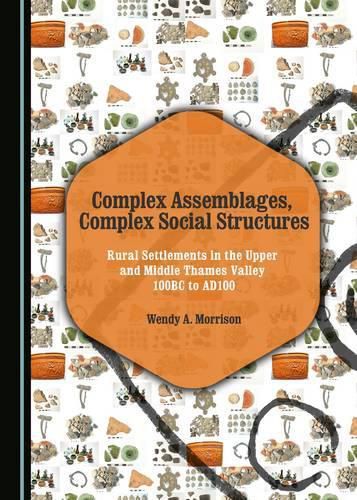Readings Newsletter
Become a Readings Member to make your shopping experience even easier.
Sign in or sign up for free!
You’re not far away from qualifying for FREE standard shipping within Australia
You’ve qualified for FREE standard shipping within Australia
The cart is loading…






Late Iron Age and Early Roman Britain has often been homogenised by models that focus on the resistance/assimilation dichotomy during the period of transition. Complex Assemblages examines the rural settlements of this period through the lens of Cultural Theory in order to tease out the more nuanced and diverse human landscape that the material suggests. This approach develops new ways of thinking about the variability observed in rural settlements from the end of the Middle Iron Age (MIA) to the early 2nd century AD; the selected study area is the Upper and Middle Thames Valley. This book uses the grid/group designations of Mary Douglas’ Cultural Theory as a tool to produce a more multifaceted picture of the period, exploring the assemblages of these rural settlements to understand the nature of the socio-political structures of the region, beyond the anonymity of tribal affiliation and the faceless economic dichotomy of high and low status.
$9.00 standard shipping within Australia
FREE standard shipping within Australia for orders over $100.00
Express & International shipping calculated at checkout
Late Iron Age and Early Roman Britain has often been homogenised by models that focus on the resistance/assimilation dichotomy during the period of transition. Complex Assemblages examines the rural settlements of this period through the lens of Cultural Theory in order to tease out the more nuanced and diverse human landscape that the material suggests. This approach develops new ways of thinking about the variability observed in rural settlements from the end of the Middle Iron Age (MIA) to the early 2nd century AD; the selected study area is the Upper and Middle Thames Valley. This book uses the grid/group designations of Mary Douglas’ Cultural Theory as a tool to produce a more multifaceted picture of the period, exploring the assemblages of these rural settlements to understand the nature of the socio-political structures of the region, beyond the anonymity of tribal affiliation and the faceless economic dichotomy of high and low status.